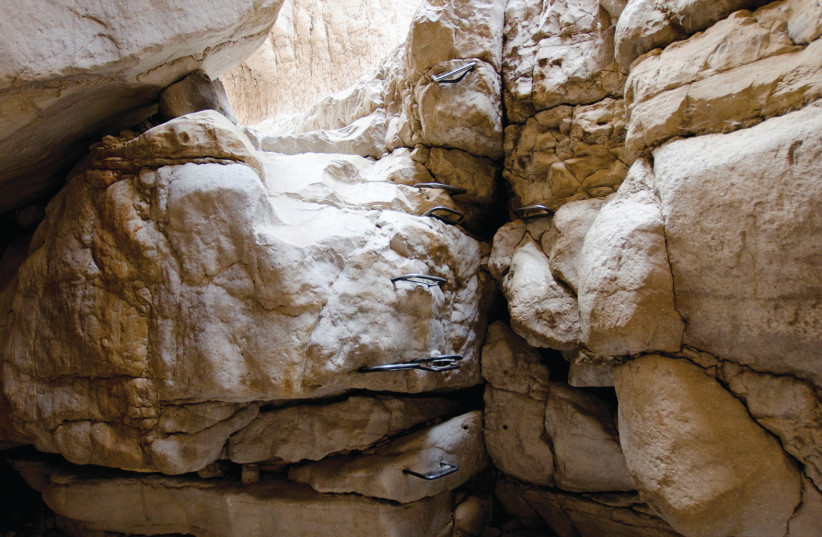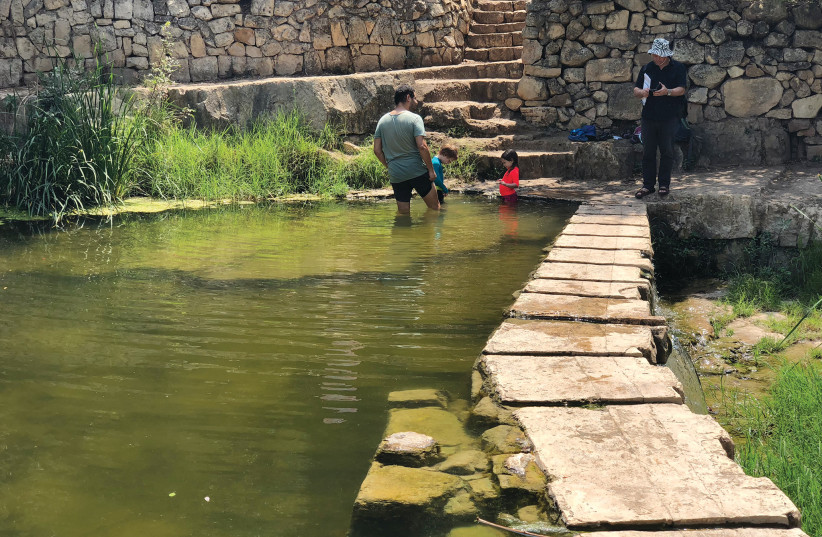The gorgeous fall weather we’ve been having recently makes this the ideal time of year to go on hikes that are too difficult in the heat of summer, and also not the best choice once the rains – and flash floods – begin. In other words, make sure to take advantage of this time between summer and winter to explore some of Israel’s greatest nature trails.
Below, you will find descriptions of three of my favorite hikes that are perfect for the whole family.
1. AGMON HAHULA PARK
If you’re a bird lover and are interested in watching these feathered creatures as they migrate south for the winter, then I highly recommend going with your family to Agmon Hahula Nature and Birding Park, which is considered one of the most prominent bird-watching areas in the world. In the fall months, you can watch as birds fly over Israel on their way to Africa, with some species enjoying a long break here along the way.
Cranes, for example, have made this spot a permanent stopover on their way south. The birds, which arrive for a drink and a rest, live harmoniously with other fauna in the park area. The large lake is the reserve’s most unique feature, and visitors can spot many types of birds as they rest, drink and frolic on the lake.
There’s an 8.5 km. circular trail that circumnavigates the lake, and one of the nice things about it is you can stop anywhere you like along the path for a picnic or a rest. Alternatively, you can rent bicycles or golf carts that you can ride/drive through the numerous paths and all around the green surroundings.
Visitors can stop at three different scenic outlooks around the lake, where they can gaze through telescopes and read about all the various types of birds that pass through the region. And for those of you who would like a closer view and to learn a bit more about the birds, you can join a guided tour and ride around on a tractor from one section of the reserve to another on paths not open to the public. During this outing, you will be treated to extremely close-up views of the birds. This experience is especially exciting at dawn or at dusk, both of which are times of the day when birds are busily engaged in their daily rituals.
In addition, Agmon Hahula Park boasts a botanical garden with an eclectic collection of over 70 different aquatic plants, some of which date back to the days when the park was covered by a swamp. Be aware, though, that this is the most popular season for visitors at the park, so there may be longer lines at the entrance and at each attraction.
Directions: Drive on Road 90 and turn right when you see the sign for the parking area.
2. NAHAL OG
The northern Dead Sea area is the perfect place to hike in the fall before the rains begin. This stunning region is full of trails for experienced hikers, as well as plenty of easy hikes for families with kids. Nahal Og is one of the most enjoyable canyons to walk in, and the path I’m going to describe is completely family-friendly. Also known as Wadi al-Muqallek, Nahal Og is one of the longest and most striking rivers in the region, especially since it’s one of the few trails that is appropriate for families, even though it does require some climbing up or down ladders. During the hike, you’ll pass by pools of water and have lots of magnificent views of the surrounding mountains, including of the Dead Sea.
The circular trail begins at the foot of Har Hatzofim, and is situated in essence between two rivers: Nahal Kadmon and Wadi Qelt. Because the trail is circular, you need only one car for this hike.
Park in the large parking area near Kibbutz Almog and from there follow the red trail markers. Soon you will come upon a large garbage receptacle at a T-junction, where you will need to decide which direction you want to take on the circular path (i.e. whether you would rather begin with a descent or an ascent).
If you take the direction that descends, just know that in this case you will be climbing down a ladder. If you start out in the direction that ascends, you will end up climbing up the ladder. In my experience, families with children are more likely to enjoy taking the path that ascends.
From the beginning of the trail next to the parking area, the path is quite steep as it leads down to the riverbed. I recommend taking this section slowly, especially if you have children with you. When the trail flattens out, take the path to the right, following the green trail markers, which will bring you all the way back to the parking area where you left your car.
Along the way, you will walk through a deep canyon, and if you look at the sides of the rock, you can see the layers of the rock that have been worn down by years and years of water flowing through the canyon. You will pass by a little pool of water, which is at its lowest this time of year. Soon, when the winter rains come, the pool will fill up completely. You can either hang out in the water, or just continue on with the trail. Soon, you will reach the ladder, which you climb and then continue on the trail.
Directions: Drive along Highway 1 toward the Dead Sea. Just before the turnoff to Kibbutz Almog, turn right into the dirt parking area.
3. EIN HEMED
Ein Hemed is a quaint little historical site on a hill just west of Jerusalem where you’ll find a Crusader fortress, as well as breathtaking views. Although it’s located extremely close to the exit off of Highway 1, you forget about the modern world straight away once you’ve entered this green paradise. There are cool springs with running water all year long and dozens of tall plane trees that offer a remarkable amount of shade. The water flows into pools, which are surrounded by picnic tables and grassy areas that are perfect for relaxing for a few minutes.Ein Hemed sits on Nahal Kislev, a river that originates in nearby Mevaseret Zion, passes through Ein Hemed, and then continues on until it merges with Nahal Sorek. The section of the river that passes through the nature reserve is 600 meters long. There are remains of a Crusader fortress that was built on the site, which can be found by following the path that weaves through the park.
This path is appropriate for families and takes about an hour to complete. It begins in the parking area and runs alongside the riverbed. Very quickly, you’ll come upon the first pool, which is quite shallow, and you can see the water gushing out of a crack in the stone. You can stop and get your feet wet there for a bit before going back to the trail. As you continue, if you look to your left, you’ll see a wall, and hiding behind it you’ll find the Ein Hemed Spring. The water is channeled through an underground pipe that leads to a large pool below, which is bordered by a dam on the end.
Some people who consider this spring to have supernatural qualities come here to hold Jewish rituals, such as tashlich, the symbolic casting off of our sins before Yom Kippur, or make a pilgrimage to the site in order to feel closer to God. But whatever your beliefs, everyone enjoys coming to Ein Hemed to revel in the cool water and the luscious green surroundings.
When you’ve had enough time to enjoy the pool, it’s time to get back to the trail, which continues from the right side of the pool and leads toward an olive grove and the Crusader fortress. Still standing are the two-story-tall walls of a rectangular structure, with an entrance from the courtyard located on the far side.
There were large halls on either side of the courtyard, with decorations on the walls. There are stairs that lead up to the second floor, from which you’ll have a great view of the region. There are also remains of an arched ceiling and an olive press nearby.
Directions: If you’re coming from the west on Highway 1, turn right at Hemed Intersection. After 150 meters, take a right at the next intersection and drive until you reach Ein Hemed.
Translated by Hannah Hochner.


